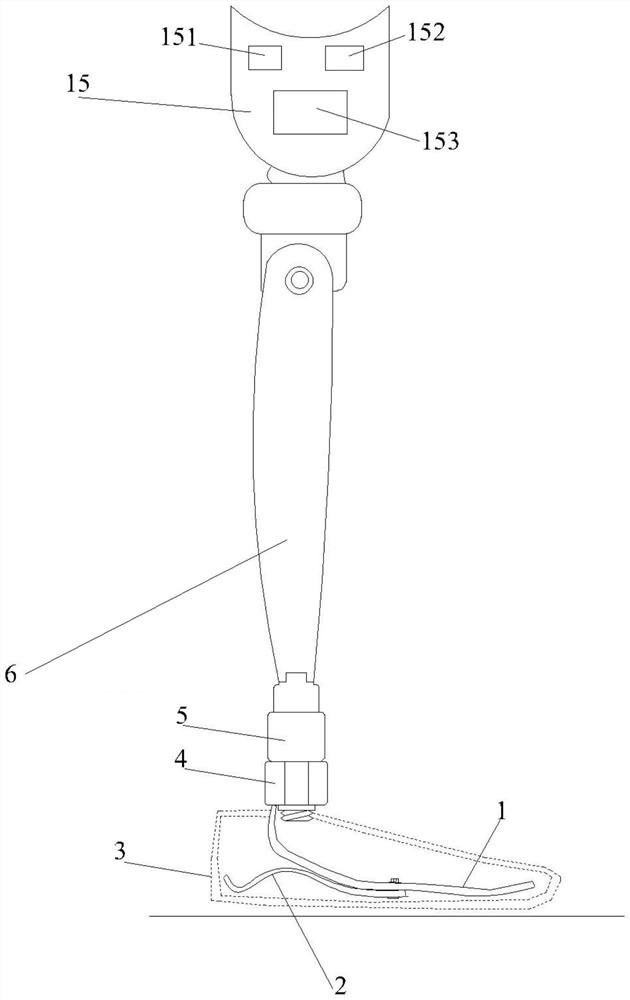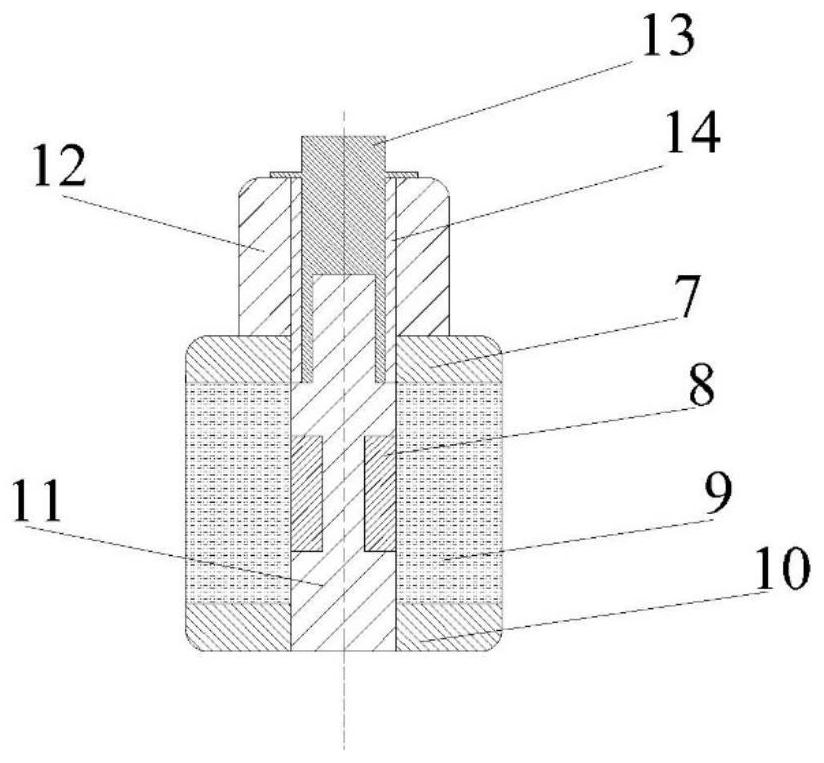Foot prosthesis device with adjustable rigidity
An adjustable and rigid technology, applied in the field of medical devices, can solve the problems of increased weight of prosthetic limb structure, inability to adjust stiffness, high energy consumption, etc., to achieve the effect of ensuring compact structure, improving comfort in use, and simplifying structure
- Summary
- Abstract
- Description
- Claims
- Application Information
AI Technical Summary
Problems solved by technology
Method used
Image
Examples
Embodiment
[0028] Such as figure 1 As shown, a foot prosthesis device with adjustable stiffness includes a first foot plate 1, a second foot plate 2, a foot buffer shell 3, a connector 4, a stiffness adjustment structure 5, a support rod 6 and a knee sheath 15, wherein , the first foot plate 1 and the second foot plate 2 are installed inside the foot cushioning shell 3, the first foot plate 1 is connected with one end of the second foot plate 2 through bolts to form the prosthesis body, the first foot plate 1 is connected with the connector 4 The stiffness adjustment structure 5 is connected, and the connector 4 is connected to the stiffness adjustment structure 5 by bolts. The stiffness adjustment structure 5 is installed at the position corresponding to the ankle of the prosthesis body, and the prosthesis body is connected to the knee sheath 15 through the support rod 6. An acceleration sensor 151 , a processor 152 and a controllable power supply 153 are installed, and the controllable...
PUM
 Login to View More
Login to View More Abstract
Description
Claims
Application Information
 Login to View More
Login to View More - R&D
- Intellectual Property
- Life Sciences
- Materials
- Tech Scout
- Unparalleled Data Quality
- Higher Quality Content
- 60% Fewer Hallucinations
Browse by: Latest US Patents, China's latest patents, Technical Efficacy Thesaurus, Application Domain, Technology Topic, Popular Technical Reports.
© 2025 PatSnap. All rights reserved.Legal|Privacy policy|Modern Slavery Act Transparency Statement|Sitemap|About US| Contact US: help@patsnap.com


